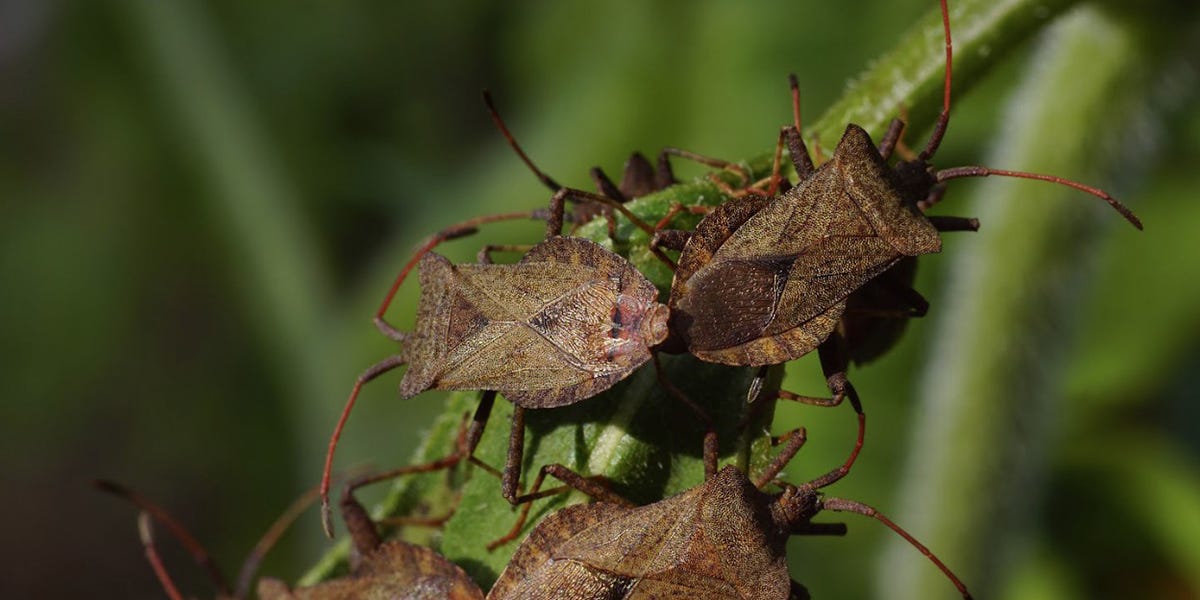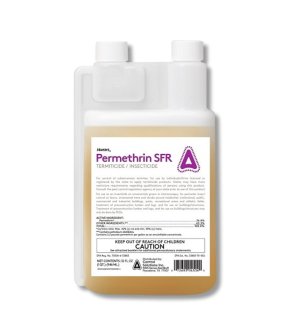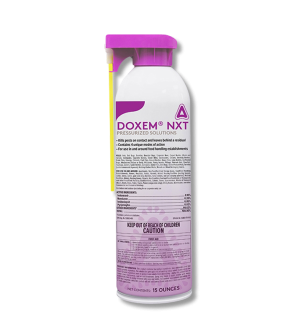Western Conifer Seed Bug Control
Most Effective Products
Western Conifer Seed Bug Control: How to Get Rid of Western Conifer Seed Bugs
This page is a general Western conifer seed bug control guide. Using the products and methods suggested will help you get complete control of Western conifer seed bugs in your property. Follow this DIY guide and use the recommended products and we guarantee 100% control of Western conifer seed bugs.
Western conifer seed bugs, commonly called pine seed bug or leaffooted bug due to their leaf-like hind legs, is a common invader of homes during the fall. As a defense mechanism when alarmed or threatened, the Western conifer seed bug omits a foul-smelling odor often causing homeowners to mistake it as a stink bug. Another pest it is commonly mistaken for is the assassin bug due to its similar appearance.
While they are closely related to stink bugs, Western conifer seed bugs are in their own family with their own set of issues. Western conifer seed bugs are different from assassin bugs in that they are plant feeders, feeding on various conifer trees and shrubs. Damages to trees and shrubs are not as threatening since they feed on seeds, causing a stunt in seed growth.
However, they have the ability to congregate in large groups potentially damages to foliage with extensive feeding activities. Western conifer seed bugs can become a nuisance when they cluster together in small groups on the side of buildings or indoors during September and October. Fortunately, Western conifer seed bugs do not cause damages to homes, but with the increase of this pests comes the larger chance of smelling their foul odors. If the steps and products in this DIY guide are taken prior to the change of cooler fall weather and emergence of spring then Western conifer seed bugs can be controlled.
Identification

Before you can proceed with a treatment program, you need to be sure the pest infesting your yard is a Western conifer seed bug. Careless identification can lead you to using the wrong treatment products, which can be a waste of your time and money. Below are some traits to know what Western conifer seed bugs look like:
- Western conifer seed bugs are 3/4 inches long, and have a triangular shaped shield body where the wings overlap near the thorax. Also, their hind legs have slight hairs.
- They have a dull brown marbled appearance, faint white zigzag line on the center of its back, and they have ornate brown and white markings along the edge of the abdomen.
- At a glance, the Western conifer seed bug resembles a stink bug with the exception that its lower legs are widened on each side resembling that of a leaf. Stink bugs will have a straight cylindrical leg. Another way to tell is to look at the antennae, which will have no white bands whereas stink bugs will have these white bands on the last two antennae segments. Lastly, stink bugs have a broader body while Western conifer seed bugs are more longer and narrow.
Use the images and description above to help you properly identify a Western conifer seed bug. If unsure, then contact us with a photo of your pest by email or visit one of our store locations with a photo or sample of the pest in a sealable plastic container. By doing this, we can help in proper identification and suggest the appropriate treatment plan for that pest.
Inspection

Once you have confirmed Western conifer seed bugs, you will then proceed with an inspection in and around your home. During this phase, you are looking for areas where the pest is frequently visiting, and the conditions allowing the pest to thrive.
Where to Inspect
Western conifer seed bugs are mainly an outdoor pest found feeding on the seeds of various trees and shrubs, especially pine cones during the summer. While they prefer pine, the Western conifer seed bug also feeds on the seeds from Douglas-fir, dogwood, sumac, and other conifers.
Towards the end of summer and early fall, this pest begins making it way into homes and structures seeking protection against the cold.
What to Look For
They do not build a nest indoors or cause structural damages, but these pests do hide in cracks and crevices. Much like the stink bug, the Western conifer seed bugs release a foul-smelling odor when disturbed, crushed, or handled.
Once the temperatures drop, the Western conifer seed bug enters a state of hibernation until spring when they will become active again. When indoors, you may find these pests deceased since they perish within a week or two if they cannot find water. Their bodies or the pest itself can be found moving slowly near baseboards, window and door frames, electrical outlet and fixture openings, heating/cooling vents, or inside walls.
Treatment
Before applying any type of pesticides, wear the proper personal protective equipment (PPE) such as gloves, masks, safety googles, long-sleeve shirt and pants, closed-toe shoes with socks, and coveralls or Tyvek suit.
The best action to take against Western conifer seed bugs is to ensure your home is treated with a residual insecticide and that it is properly sealed, especially during September and October.
Step 1: Seal Cracks and Crevices

Western conifer seed bugs can make their way into your home through small cracks, crevices, voids, or other holes. For this reason, you will want to seal as many entryways for these pests as possible with caulk. Larger voids will need to be filled with Copper Mesh.
Step 2: Apply Residual Insecticide

Permethrin SFR 36.8% is a emulsifiable concentrate that contains permethrin 36.8%, which effects the seed bugs central nervous system leading to muscle spasms, paralysis, and eventual death. Once it dries on your treated foliage it will continue to repel seed bugs and over 75 other type of pests for up to 30 days.
We recommend using a hose-end sprayer to reach the leaves on elevated trees. Determine how much Permethrin SFR 36.8% to use by measuring the square footage of the treatment area. To do this, measure the length and width of the treatment area and multiply (length X width = square footage). For acreage, take the square footage and divide it by one acre (square footage / 43,560 sq. ft. = acre).
Use 8 fl. oz. of Permethrin SFR 36.8% per 100 gallons of water and apply 5 to 10 gallons of spray mixture per tree. To mix the solution in a hose end sprayer, remove the reservoir from the nozzle while the control valve is in the off position. Fill the reservoir with the measured amount of Permethrin SFR 36.8% then attach it to the nozzle until secure. Once secured, turn the water hose on and switch the control valve from off to on position.
Turn the deflector on the hose-end sprayer upside down to apply the product to the underside of trees and shrubs. Spray the appropriate amount of water until there is no product left in the reservoir.
When treating evergreen shrubs, perform a broadcast application with 0.9 to 1.8 fl. oz. of product per 4 gallons of water per 10,000 sq. ft. Spray the top and bottom of tree and other ornamental plant leaves until wet, but not to the point of runoff.
Spray the mixed Permethrin SFR 36.8% solution when 30 days have passed after flower closure. Direct application to blooms may cause browning of petals.
This product may be used on ornamental plants, foliage and flowering plants, evergreens, woody and herbaceous non-edible ornamentals and non-bearing plants of fruiting species in landscaped areas around industrial, residential and commercial buildings, non-crop, and, for treatment of plants intended for aesthetic purposes in interior gardens and plantscapes.
Step 3: Direct Spray Applications

While you can manually remove Western conifer seed bugs with a glove covered hand in your home it best to avoid physical contact with a direct insecticide aerosol spray. Doxem NXT is a broad-spectrum aerosol insecticide with four mode of action and four active ingredients to eliminate leaffooted bugs in your home, which is what a Western conifer seed bug is considered.
If you find a Western conifer seed bug in your home, perform a spot treatment. To do this, hold the can 12 to 15 inches away from the pest and apply at the rate of 2 seconds of spraying per 2 sq. ft. Make sure to directly treat all Western conifer seed bugs in the area. However, in each spot application do not exceed more than 2 sq. ft. in size.
Deceased Western conifer seed bugs can still emit a foul-odor when crushed so gently pick them up with a clove covered hand or paper towel.
Prevention

Once Western conifer seed bugs have been eliminated, it is important to enact some preventative measures to keep these pest away from your tree, shrubs, and home. Here are some preventative tasks to prevent Western conifer seed bugs from returning to your yard and home:
- Start by eliminating all potential opening in and around your home by sealing cracks, crevices, holes with caulk and larger voids with Copper Mesh. All other gaps such as around window and door frames will be need to be properly repaired or replaced.
- Install or repair damaged screens on doors and windows around your home to keep Western conifer seed bugs out.
- Maintain your lawn with regular raking, mowing, and pruning of overgrown branches and leaves to limit habitats and food sources.
- Western conifer seed bugs can be prevented indoors with regular crack and crevice treatments with Doxem NXT. Lift the injection tube until it points outwards then place the injector into cracks, crevices, holes, and other small openings. With a glove covered hand, spray Doxem NXT along the length of the opening in 1 second bursts at a speed of 3 feet per second and space the applications out about 3 feet apart. In inaccessible voids calculate the void’s volume and treat at rate of five to ten seconds per three cubic feet. Treat outdoor cracks, crevices, and voids around your before spring (May), early summer (June), and fall (August to October). When applied, Doxem NXT will continue to repel pests for up to 180 days after application.
- Retreat trees and ornamentals prior to the fall and spring season with Permethrin SFR 36.8% to control Western conifer seed bugs before they emerge from eggs and as they begin to feed and travel.
Key Takeaways
What are Western Conifer Seed Bugs?
- Western conifer seed bugs are a type of seed bug that feeds on the seeds of several conifer species, and much like the stink bug releases a pungent odor when crushed or threatened.
How to Get Rid of Western Conifer Seed Bugs
- To get rid of Western conifer seed bugs, you will need to first seal off any holes, voids, cracks, crevices, or holes in and around your home. Next, perform an application outdoors on foliage with Permethrin SFR 36.8% and treat any exposed pests indoors with Doxem NXT.
Preventing Western Conifer Seed Bug Reinfestation
- Continue to keep any holes, gaps, voids on the inside and outside of your sealed with caulk or Copper Mesh. Regularly, keep the health of your lawn maintained with on-going raking, pruning, and mowing. Treat indoor and outdoor cracks, crevices, and voids with Doxem NXT on a quarterly basis to keep Western conifer seed bugs away for up to 180 days. Retreat trees and ornamentals before spring (May), early summer (June), and fall (August to October) with Permethrin SFR 36.8%.













































































































































































































































































































































































































































































































































